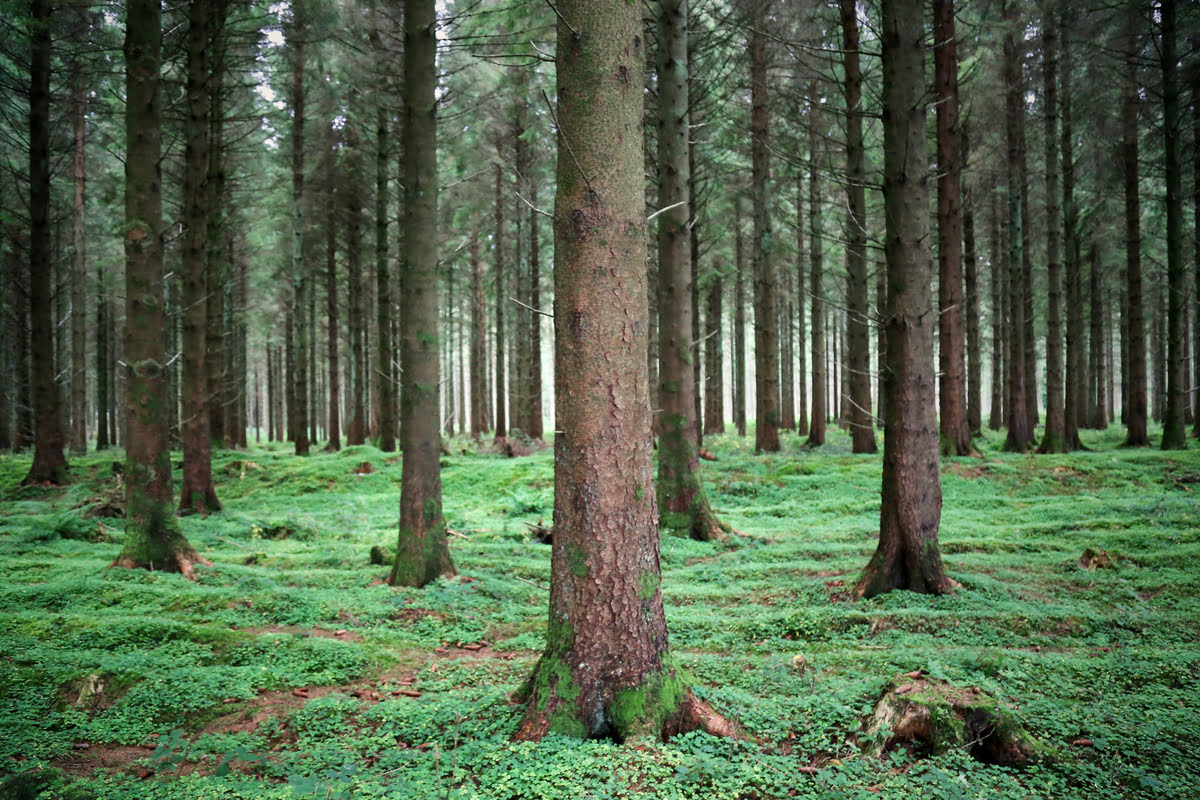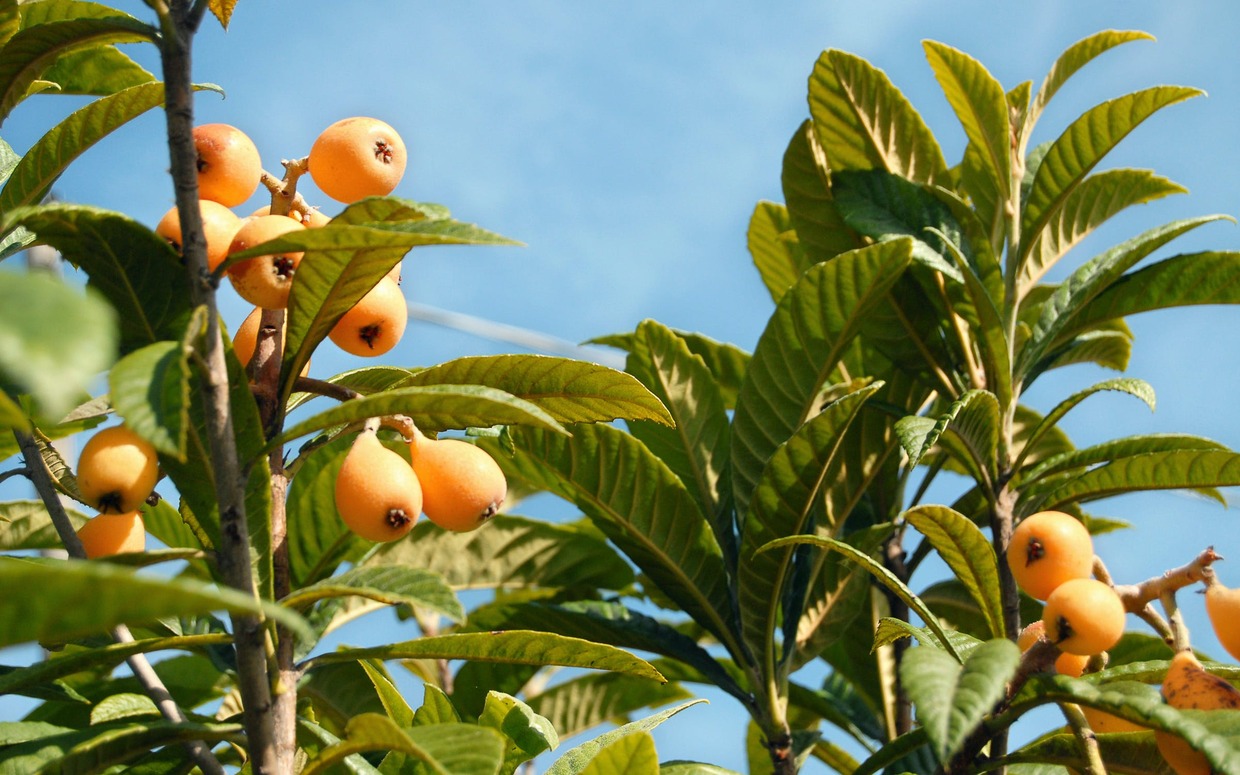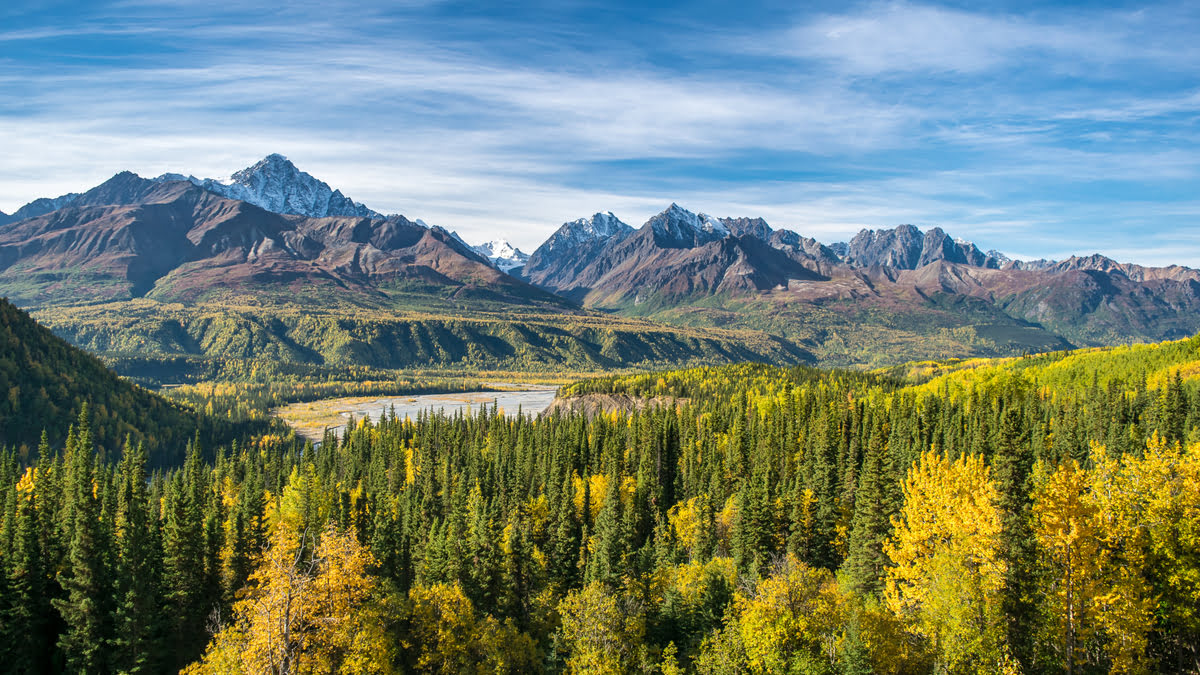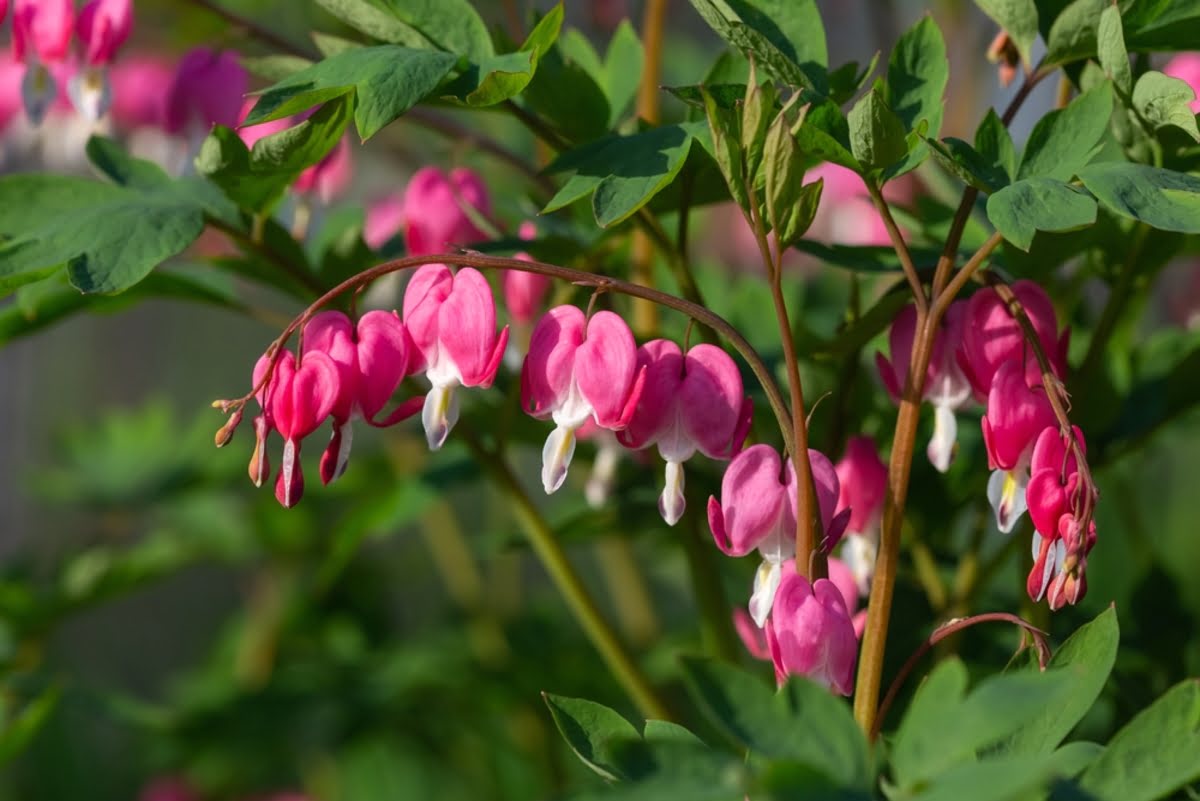Home>Gardening News and Trends>Latest News>What Grows Beneath Taller Trees
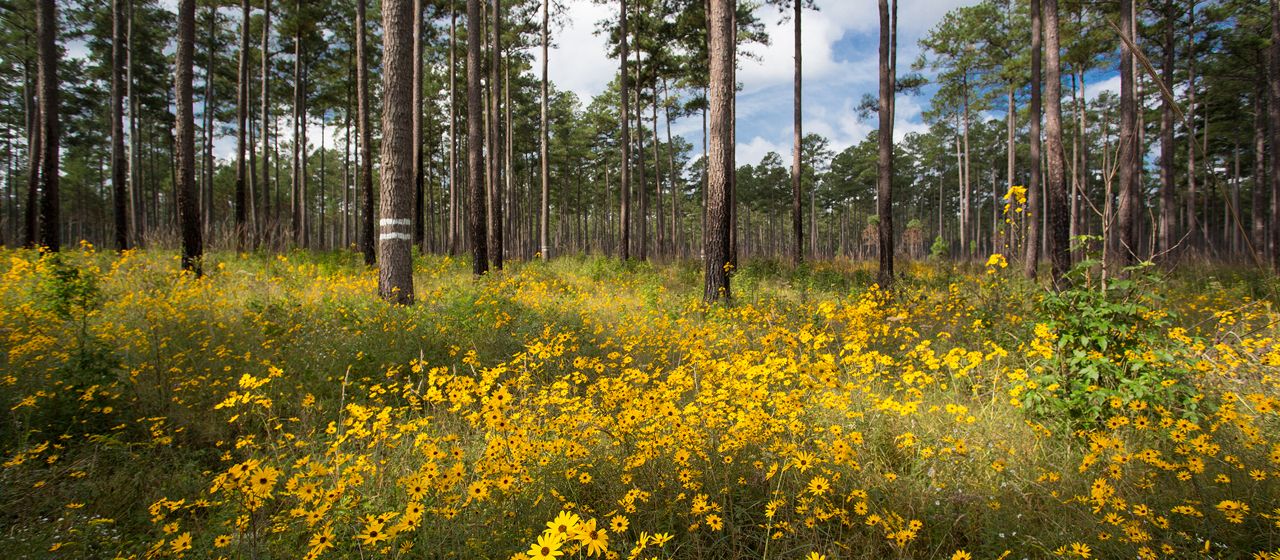

Latest News
What Grows Beneath Taller Trees
Published: October 29, 2023
Discover the latest news on what grows beneath taller trees. Stay informed with the latest updates and insights on undergrowth and plant diversity.
(Many of the links in this article redirect to a specific reviewed product. Your purchase of these products through affiliate links helps to generate commission for Chicagolandgardening.com, at no extra cost. Learn more)
Table of Contents
- Introduction
- The Importance of Understanding Understory Plant Growth
- Factors Affecting Understory Plant Growth
- Shade Tolerance of Understory Plants
- Nutrient Competition in the Understory
- Moisture Availability and Understory Plants
- The Role of Root Competition in Understory Growth
- Interactions Between Understory Plants and Taller Trees
- Managing Understory Growth in Forestry and Landscaping
- Conclusion
Introduction
When we walk through a dense forest or explore a well-maintained garden, we often admire the grandeur and beauty of the tall trees that dominate the landscape. However, what many people fail to notice is the intricate ecosystem that exists beneath the canopy of these towering giants. This hidden world, known as the understory, is filled with a diverse array of plants that play a vital role in the overall health and balance of the ecosystem.
Understanding the growth and dynamics of understory plants is of paramount importance for botanists, ecologists, and land managers. The understory vegetation not only adds aesthetic value to an area but also contributes to the overall biodiversity, nutrient cycling, and habitat complexity. By delving deeper into the factors that influence understory plant growth, we can gain crucial insights into maintaining and sustaining healthy ecosystems.
In this article, we will explore the various factors that affect understory plant growth, such as shade tolerance, nutrient competition, moisture availability, and root competition. We will also delve into the interactions between understory plants and taller trees, as well as strategies for managing understory growth in forestry and landscaping.
Whether you are a nature enthusiast, a land manager, or simply curious about the hidden world beneath the trees, this article will provide you with a comprehensive understanding of the importance of understory plant growth and the intricate relationships that exist within this unique ecosystem.
The Importance of Understanding Understory Plant Growth
Understory plant growth plays a vital role in maintaining the health and balance of forest ecosystems and landscaped areas. By understanding the dynamics and importance of understory plants, we can make informed decisions about land management and conservation efforts.
One of the key reasons why understanding understory plant growth is important is because of its impact on biodiversity. Understory plants contribute to the overall species richness of an area, providing habitat and resources for a diverse range of organisms. These plants serve as food sources for herbivores and support a variety of insects, birds, and small mammals. Without a healthy understory, the overall biodiversity and ecological resilience of an ecosystem can be compromised.
Additionally, understory plants contribute to the cycling of nutrients within an ecosystem. They absorb nutrients from the soil and play a crucial role in recycling organic matter, enriching the soil, and maintaining nutrient balance. Understory plants also help prevent erosion by holding the soil together with their roots, ensuring the stability of the ecosystem.
Understanding how various factors, such as shade tolerance, nutrient competition, moisture availability, and root competition, affect understory plant growth can also inform land management practices. For example, knowing the shade tolerance of different understory species allows land managers to strategically plant species that can thrive in the understory environment. This knowledge can be particularly useful in forestry practices, where the preservation of understory plants is necessary for sustainable timber production.
Furthermore, understanding the interactions between understory plants and taller trees can help us make informed decisions about forest management. For instance, some understory plants have a symbiotic relationship with specific tree species, where they provide mutual benefits to each other, such as enhanced nutrient uptake and protection from herbivores. By preserving these beneficial interactions, we can promote the overall health and resilience of forest ecosystems.
Overall, understanding and appreciating the significance of understory plant growth allows us to make informed decisions about land management, conservation efforts, and the overall well-being of ecosystems. By recognizing the complexity and importance of the understory, we can ensure the preservation and sustainability of our natural environments.
Factors Affecting Understory Plant Growth
Understory plant growth is influenced by a variety of factors that can either promote or constrain their development and survival. Understanding these factors is crucial for managing and maintaining healthy understory vegetation.
One of the primary factors that affect understory plant growth is shade tolerance. Different plant species have varying abilities to tolerate low light conditions. Some understory plants have adapted to thrive in the shade, while others require more sunlight to grow. Shade-tolerant plants have evolved structural and physiological adaptations such as larger leaves and increased chlorophyll content to maximize light capture in low-light environments. Understanding the shade tolerance of different understory species can inform decisions about plant selection and management practices in areas with limited sunlight.
Nutrient competition is another critical factor that affects understory plant growth. As taller trees intercept a significant portion of incoming nutrients through their leaves, understory plants must compete for limited nutrient availability. Some understory species have developed adaptations that allow them to efficiently absorb and utilize nutrients from the soil, while others may struggle under nutrient-limited conditions. Managing nutrient availability through fertilization or incorporating nutrient-rich organic matter into the soil can help support the growth and vitality of understory plants.
Moisture availability also plays a crucial role in determining understory plant growth. In dense forests or areas with limited rainfall, understory plants may face competition for water from both taller trees and neighboring plants. Furthermore, the dense canopy of tall trees can intercept rainwater, reducing the amount of moisture that reaches the understory. Understory plants may have adaptations that enable them to survive in drier conditions or access moisture from deeper soil layers. Understanding moisture availability and implementing strategies such as irrigation or mulching can help support the growth and resilience of understory plants.
Root competition is another factor that can significantly impact understory plant growth. The root systems of taller trees are often more extensive and can outcompete understory plants for water, nutrients, and space. Additionally, root exudates from taller trees can inhibit the growth of understory plants. Understanding these root interactions can inform planting strategies and help manage the competition between different plant species. Implementing techniques such as root barriers or selective pruning can help mitigate root competition and promote healthy understory plant growth.
By considering these factors, land managers and gardeners can make informed decisions to promote the growth and diversity of understory plants. Careful planning, plant selection, and targeted management strategies can help create thriving ecosystems with a rich and vibrant understory.
Shade Tolerance of Understory Plants
The ability of understory plants to tolerate varying levels of shade plays a critical role in their growth and survival. Understanding the shade tolerance of different plant species is essential for successful understory vegetation management.
Shade-tolerant plants have evolved adaptations that enable them to thrive in low-light conditions. These adaptations include larger leaves with a greater surface area for light capture, increased chlorophyll content to enhance photosynthesis efficiency, and efficient allocation of resources towards root growth to access moisture and nutrients from the soil.
Some understory plants, known as facultative shade plants, can tolerate a wide range of light conditions, from full sun to deep shade. These plants can adapt and shift their growth strategies to both capture available light and conserve resources when light is limited. Facultative shade plants are often found in environments with variable light conditions, such as forest edges or disturbed areas with fluctuating canopy cover.
In contrast, obligate shade plants are highly specialized to survive in the deep shade of closed canopies. These plants typically have thin leaves, lower growth rates, and efficient light-harvesting mechanisms. They are specifically adapted to maximize light absorption and allocation of resources in low-light environments. Examples of obligate shade plants include ferns and some species of wildflowers.
Intermediate shade plants have a moderate shade tolerance and can grow in both partially shaded and moderately bright environments. These plants can adapt to fluctuating light conditions and are commonly found in the understory of forests with a more open canopy or areas with intermittent sunlight.
Understanding the shade tolerance of different understory species allows land managers, gardeners, and restoration specialists to make informed decisions about plant selection and management practices. In areas with limited sunlight, planting shade-tolerant species can ensure the success and vitality of the understory vegetation. Conversely, in areas with more open canopies, selecting species with specific light requirements can create a more diverse understory and enhance overall ecosystem function and biodiversity.
Managing shade in understory areas can also have a profound impact on plant growth and development. Strategically pruning or thinning taller trees can increase light penetration and create more favorable conditions for shade-intolerant or intermediate shade plants. Carefully planned canopy manipulation can also help maintain a balance between shade-tolerant and shade-intolerant species, promoting a diverse and resilient understory.
Overall, understanding the shade tolerance of understory plants is crucial for effective land management and restoration efforts. By selecting and managing plant species based on their shade requirements, we can support the growth and success of understory plants, ultimately contributing to the overall health and beauty of forest ecosystems and landscaped areas.
Nutrient Competition in the Understory
Understory plants in forests and landscaped areas often face intense competition for limited nutrient resources. Understanding and managing nutrient competition is crucial for supporting the growth and vitality of understory vegetation.
In forest ecosystems, the canopy of taller trees intercepts a significant portion of incoming nutrients through their leaves. As a result, understory plants must compete for the remaining nutrients present in the soil. This competition can be particularly challenging in nutrient-poor environments or areas with high tree density.
Some understory plants have developed adaptations to efficiently absorb and utilize nutrients to thrive under nutrient-limited conditions. These plants may have specialized root systems, such as extensive fibrous roots or mycorrhizal associations, which enable them to access nutrients more effectively. Additionally, some understory species have mechanisms to enhance nutrient recycling through the decomposition of organic matter and the release of nutrient-rich compounds into the soil.
Managing nutrient availability in the understory can be achieved through various techniques. Fertilization is one approach that can provide additional nutrients to support the growth of understory plants, especially in areas where nutrient levels are naturally low. However, careful consideration should be given to the specific nutrient requirements of different plant species to avoid over-fertilization and potential negative environmental impacts.
Another approach to managing nutrient competition in the understory is through the incorporation of nutrient-rich organic matter into the soil. This can be achieved by adding compost, leaf litter, or other organic materials that can break down and release nutrients over time. This practice not only improves soil fertility but also enhances the long-term nutrient availability for understory plants.
In addition to managing nutrient competition, it is important to consider the overall nutrient cycling in the ecosystem. Ensuring that nutrient inputs and outputs are balanced helps maintain the overall health and productivity of both tall trees and understory vegetation. Practices such as leaf litter retention and minimal disturbance of the forest floor can help preserve nutrient-rich organic matter and promote natural nutrient cycling processes.
Strategic planting and vegetation management can also aid in minimizing nutrient competition. By selecting understory plant species that have lower nutrient requirements or are adapted to specific soil conditions, such as those adapted to nutrient-poor soils, land managers can reduce competition and promote optimal growth. Furthermore, spacing and diversifying the understory can help alleviate competition by providing adequate resources to individual plants.
Recognizing and managing nutrient competition in the understory is crucial for maintaining a healthy and diverse ecosystem. By understanding the nutrient requirements and adaptations of understory plants, implementing appropriate management practices, and considering the overall nutrient cycling, we can promote the growth and longevity of understory vegetation.
Moisture Availability and Understory Plants
Moisture availability is a critical factor that influences the growth and survival of understory plants in forest ecosystems and landscaped areas. Understanding and managing moisture availability is crucial for maintaining healthy and resilient understory vegetation.
In dense forests or areas with limited rainfall, understory plants often face competition for water resources. Taller trees intercept a significant portion of rainfall before it reaches the forest floor, reducing the amount of moisture available to understory plants. Additionally, neighboring plants in the understory may also compete for available water, exacerbating the water stress experienced by understory species.
Understory plants have adapted various strategies to cope with limited moisture availability. Some species have extensive root systems that enable them to access water from deeper soil layers. Others have evolved mechanisms to tolerate dry conditions, such as succulent leaves or the ability to enter dormancy during periods of water scarcity. These adaptations allow understory plants to maximize water uptake and use resources efficiently.
Managing moisture availability is crucial for supporting the growth of understory plants. Implementing irrigation systems in landscaped areas can help provide adequate water to understory vegetation, particularly during dry periods. Ensuring that water is distributed evenly and efficiently can help prevent water stress and promote healthy plant growth.
In forest ecosystems, practices such as mulching and retaining leaf litter can help regulate soil moisture levels. Mulching helps conserve soil moisture by reducing water evaporation, minimizing temperature fluctuations, and preventing weed growth that can compete with understory plants for water. Leaf litter retention acts as a natural mulch, gradually releasing water and nutrients back into the soil.
Thinning or selective tree pruning can also have a positive impact on moisture availability in the understory. By allowing more light and air movement, thinning the canopy can reduce moisture loss through evapotranspiration and create a more favorable microclimate for understory plants. Strategic pruning can also redirect water flow, ensuring that more water reaches the understory instead of being intercepted by the taller trees.
Furthermore, understanding the species-specific water requirements of understory plants can inform planting strategies and help select species that are better adapted to drier or wetter conditions. This can enhance the overall resilience and sustainability of the understory ecosystem.
Managing moisture availability in the understory is crucial for promoting the growth and diversity of understory plants. By implementing appropriate irrigation and water conservation practices, mulching, leaf litter retention, and strategic tree pruning, we can create a more favorable environment for understory vegetation, supporting their long-term survival and contributing to the overall health and functioning of the ecosystem.
The Role of Root Competition in Understory Growth
Root competition is a significant factor that affects the growth and development of understory plants in forest ecosystems and landscaped areas. Understanding and managing root competition is crucial for promoting the health and vitality of understory vegetation.
Taller trees with extensive root systems can exert strong competitive pressures on understory plants. The roots of taller trees often have a larger biomass and can explore a wider area of the soil, depleting resources such as water and nutrients that are essential for understory growth. Additionally, tall trees produce root exudates that can inhibit the growth of neighboring plants, further intensifying root competition in the understory.
Understory plants have adapted various strategies to cope with root competition and maximize their access to resources. Some species develop deep taproots to access nutrients and water from lower soil layers that are less affected by the shallow roots of tall trees. Others spread their roots horizontally, efficiently exploring the soil in search of resources beyond the reach of tall tree roots.
Managing root competition involves several strategies to promote the growth of understory plants. One approach is the creation of root barriers or physical barriers, such as geotextiles or plastic sheets, that restrict the spread of tall tree roots into areas designated for understory plantings. These barriers can be effective in minimizing root competition and providing a more favorable environment for the growth of understory species.
Selective pruning of tall trees can also help alleviate root competition in the understory. By focusing pruning efforts on specific areas or trees, resources such as water and nutrients can be redirected to understory plants, promoting their growth and development. Careful planning and consideration should be given to avoid damaging the overall health and stability of the trees by excessive pruning.
Spacing and planting patterns are important considerations in managing root competition. Providing adequate spacing between trees and understory plantings can reduce root overlap and promote a more balanced resource distribution. Selecting understory plant species that are better adapted to growth in the presence of root competition can also alleviate the negative effects of competition.
Furthermore, promoting a diverse and balanced understory can help minimize root competition. Planting a variety of species with different root systems and resource requirements can reduce competition for specific resources and ensure a more sustainable and resilient understory ecosystem.
Understanding the role of root competition in understory growth is crucial for effective land management and ecosystem restoration. By implementing strategies that minimize root competition, such as the use of root barriers, selective pruning, and thoughtful planting design, we can create a more conducive environment for the growth and success of understory plants, ultimately promoting a healthy and thriving ecosystem.
Interactions Between Understory Plants and Taller Trees
The interactions between understory plants and taller trees play a crucial role in shaping the dynamics and biodiversity of forest ecosystems. Understanding these interactions is essential for effective land management, conservation efforts, and promoting the overall health and resilience of the ecosystem.
One of the key interactions between understory plants and taller trees is competition for resources. As taller trees intercept a significant portion of sunlight, water, and nutrients, understory plants must adapt to limited resource availability. Understory plants often exhibit characteristics such as shade tolerance, efficient nutrient uptake, and deep rooting to effectively compete with taller trees for essential resources.
However, not all interactions between understory plants and taller trees are competitive. In fact, some species have evolved beneficial relationships, such as mutualistic associations. For example, certain understory plants form mycorrhizal associations with the roots of taller trees, benefiting both parties involved. Understory plants gain access to nutrients and water through the extensive root network of taller trees, while the trees receive enhanced nutrient uptake facilitated by the mycorrhizal fungi.
In addition to mycorrhizal associations, other examples of beneficial interactions between understory plants and taller trees include facilitation and protection. Some understory species may benefit from the shelter and protection provided by the canopy of taller trees, shielding them from extreme weather conditions or reducing herbivory pressure.
These interactions can have profound implications for the diversity and composition of forest ecosystems. Understanding the dynamics of these interactions allows land managers to make informed decisions about conservation and restoration efforts. For instance, preserving the mutualistic relationships between understory plants and taller trees is important for maintaining the overall health and biodiversity of the ecosystem.
Beyond their ecological significance, the interactions between understory plants and taller trees also contribute to the aesthetic and recreational value of forests and landscapes. The diverse array of understory plants adds visual interest, texture, and color to the forest understory, creating a more captivating and enjoyable environment for visitors.
Furthermore, the roles that understory plants play in providing habitat and food sources for wildlife cannot be overlooked. The presence of a diverse and healthy understory supports a range of organisms, from insects and birds to small mammals. It contributes to the overall biodiversity and ecological balance of the ecosystem.
Managing and preserving the interactions between understory plants and taller trees requires careful consideration of the ecology and dynamics of the ecosystem. Strategies such as maintaining canopy cover, promoting diverse understory plant communities, and preserving mutualistic associations can help support and enhance these interactions.
Overall, understanding and appreciating the interactions between understory plants and taller trees is essential for effective land management, maintaining biodiversity, and promoting the health and resilience of forest ecosystems. By recognizing the intricate relationships that exist within these systems, we can make informed decisions to ensure the preservation and sustainability of our natural environments.
Managing Understory Growth in Forestry and Landscaping
Managing understory growth is crucial in forestry and landscaping practices to maintain healthy and sustainable ecosystems. By implementing appropriate management strategies, land managers can promote the growth and diversity of understory vegetation while balancing the needs of taller trees and other environmental factors.
One key aspect of managing understory growth is understanding the specific requirements and characteristics of different plant species. This knowledge allows for the selection of appropriate plant species that can thrive in the understory, taking into account factors such as shade tolerance, moisture requirements, and nutrient preferences. By promoting the growth of well-adapted species, land managers can ensure the overall health and resilience of the understory.
Thinning, selective pruning, and canopy manipulation are effective techniques to manage understory growth in forestry settings. Thinning the canopy selectively removes certain trees to allow more light to reach the understory, promoting the growth of shade-intolerant and intermediate shade plants. Selective pruning focuses on particular trees or branches that create excessive shade or impede the growth of desired understory species. These practices are done thoughtfully to preserve the overall structure and stability of the forest ecosystem.
In landscaping settings, strategically positioned trees and shrubs can create microhabitats that facilitate understory growth. By selecting and placing taller trees in a way that maximizes light penetration to the understory, land managers can create favorable conditions for understory plants. Additionally, planting shrubs or smaller trees in the understory can provide shade and protection for understory growth, enhancing biodiversity and creating a more visually appealing landscape.
Maintaining a diverse understory is also important in managing understory growth. Planting a variety of species with different growth habits, moisture requirements, and root systems helps reduce competition and creates a more resilient ecosystem. Including native and regionally appropriate plants in the understory helps maintain ecological balance and supports local wildlife populations.
Proper soil management is critical for supporting understory growth. Amending soils with organic matter, such as compost or leaf litter, improves soil fertility and moisture retention. It also enhances nutrient availability and promotes beneficial soil microbes that facilitate nutrient cycling. Adequate watering and irrigation practices should be implemented, especially during periods of drought, to ensure that understory plants receive sufficient moisture for growth.
Regular monitoring and assessment of the understory are essential for effective management. This allows land managers to identify issues such as invasive species, pest outbreaks, or nutrient deficiencies and take appropriate actions to address them promptly. Regular maintenance, including weeding and removing competing vegetation, prevents the encroachment of unwanted plants and ensures the success of desired understory species.
Ultimately, managing understory growth requires a holistic approach that considers the specific needs of the ecosystem, the interactions between plants and trees, and the overarching goals of forestry and landscaping practices. By implementing sound management strategies, land managers can cultivate thriving understory vegetation, contributing to the overall health, biodiversity, and aesthetic value of the environment.
Conclusion
Understanding and managing understory plant growth is paramount for maintaining healthy and sustainable ecosystems in both forest and landscaped settings. The intricate interactions between understory plants and taller trees, as well as the various factors that influence understory growth, shape the biodiversity, resilience, and overall health of the ecosystem.
We have explored the importance of understanding understory plant growth, highlighting its contributions to biodiversity, nutrient cycling, and the overall balance of the ecosystem. Factors such as shade tolerance, nutrient competition, moisture availability, and root competition all play crucial roles in shaping understory plant growth. By recognizing these factors and employing appropriate management strategies, we can promote the growth, diversity, and vitality of understory vegetation.
Additionally, we have examined the interactions between understory plants and taller trees, recognizing the competitive and mutualistic relationships that exist. Understanding these interactions guides forest management decisions, allowing for the preservation of mutualistic associations and the promotion of a diverse and healthy understory.
In forestry and landscaping, effective management of understory growth involves thoughtful plant selection, selective pruning, canopy manipulation, and promoting a diverse understory community. Balancing resource availability, addressing root competition, and optimizing moisture availability are critical components of successful understory management practices.
By implementing best practices, we can create thriving ecosystems with a rich and vibrant understory. These diverse and resilient environments not only enhance the visual appeal of forests and landscaped areas, but also provide invaluable habitat for wildlife, contribute to the overall health of the ecosystem, and ensure the sustainability of our natural environments.
Managing and supporting understory growth requires ongoing observation, assessment, and adaptation to changing environmental conditions. Continuous monitoring of the understory allows for early detection of issues such as invasive species, nutrient deficiencies, or pest outbreaks. By addressing these challenges promptly, land managers can ensure the success and long-term viability of the understory.
In conclusion, understanding and managing understory plant growth is crucial for maintaining healthy ecosystems, enhancing biodiversity, and preserving the natural beauty of our forests and landscapes. By considering the various factors that influence understory growth, implementing effective management strategies, and promoting diverse and resilient understory communities, we can create and maintain sustainable environments that benefit both humans and the natural world.

